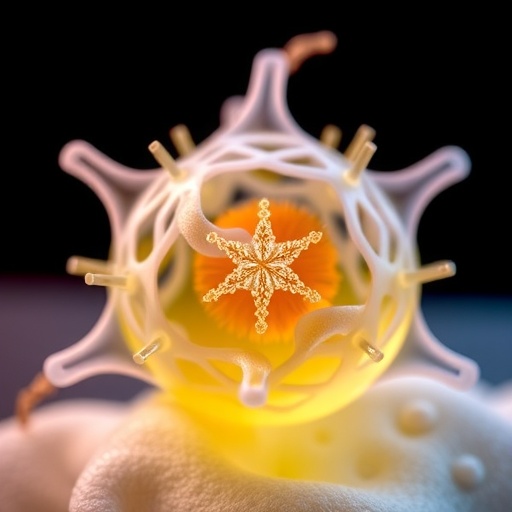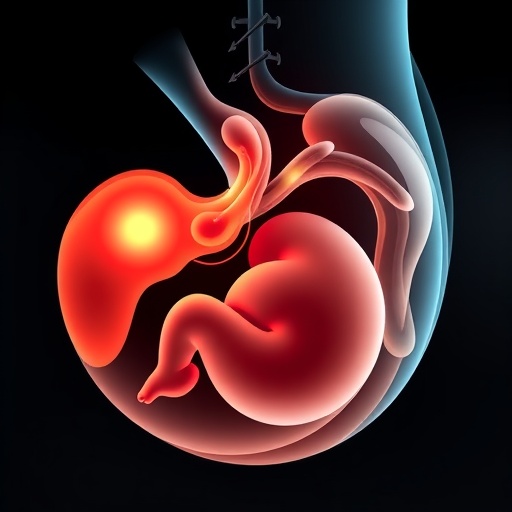Researchers at the forefront of biomedical engineering have recently developed a cutting-edge stereolithography 3D printing-based micropatterning method aimed at shedding light on the complex mechanisms of endothelial-to-mesenchymal transition (EMT). This innovative approach is expected to revolutionize how scientists study the mechanobiology underlying EMT, which plays a crucial role in various physiological processes and pathological conditions, including organ fibrosis, cancer metastasis, and wound healing. By harnessing the power of advanced 3D printing technology, the team believes they can create highly controlled microenvironments that will enable a deeper understanding of cellular behavior and response.
The significance of endothelial-to-mesenchymal transition cannot be overstated. During EMT, endothelial cells transform into mesenchymal-like cells, acquiring migratory and invasive properties that allow them to play versatile roles in tissue repair and fibrosis. However, dysregulation of this process can lead to severe consequences, such as the progression of cancer and chronic inflammatory diseases. Up until now, investigating the molecular mechanisms behind EMT has been challenging due to the lack of suitable experimental platforms that can replicate the complex in vivo microenvironment.
To address this gap in research, the scientists focused on developing a micropatterning technique using stereolithography, a form of 3D printing known for its precision and ability to create intricate structures. The team’s novel method allows for the fabrication of micro-scale patterns directly onto a surface, creating a highly controlled environment for cell culture. This approach enables researchers to selectively position cells and control the biochemical cues to which they are exposed, mimicking the natural cellular environment more closely than traditional culture methods.
One of the key innovations of this technique lies in its ability to manipulate cell-cell and cell-matrix interactions with unprecedented precision. By customizing the physical properties of the micropatterns, researchers can influence the behavior of endothelial cells, guiding them through various stages of the EMT process. This level of control over the cellular microenvironment opens up new avenues for studying the spatiotemporal dynamics of EMT, which is critical for elucidating the pathways and mechanisms at play.
Furthermore, the team conducted a series of experiments to demonstrate the effectiveness of their newly developed method. By culturing endothelial cells on these micro-patterned surfaces, they were able to observe distinct phenotypic changes associated with EMT, such as alterations in cell morphology and increased expression of mesenchymal markers. These findings not only validate the functionality of the micropatterning technique but also suggest that it can serve as a powerful tool for investigating the underlying biology of EMT in a more controlled manner.
Another notable advantage of this approach is its scalability. Traditional methods for studying cellular transitions often involve laborious and time-consuming procedures. The stereolithography-based micropatterning method, on the other hand, can be rapidly scaled up to accommodate multiple experimental conditions and replicated with high fidelity. This will significantly speed up the research process and allow for high-throughput analyses, enabling scientists to investigate the effects of various stimuli on EMT in a more efficient and comprehensive manner.
Additionally, the researchers have made valuable strides in integrating advanced imaging techniques with their micropatterning method. By leveraging high-resolution microscopy, they can capture real-time dynamics of cell behavior on micro-patterned surfaces. This capability offers an unprecedented opportunity to observe cellular processes as they unfold, providing deeper insights into the mechanics of EMT and how external factors can influence this critical transition.
The implications of this research extend far beyond the lab. The ability to understand the mechanobiological factors that drive EMT could inform the development of novel therapeutic strategies for a variety of conditions, ranging from cancer to tissue repair. With many diseases linked to aberrant EMT, such as metastatic cancers where cells lose their epithelial characteristics and gain invasive properties, the insights gained from this method could pave the way for innovative treatment options.
Moreover, this method could also be applied to study other critical cellular processes beyond EMT. For example, it may help elucidate mechanisms related to stem cell differentiation, wound healing, and chronic inflammatory responses. The versatility of the micropatterning technique opens the door for multidisciplinary applications, further bridging the gap between engineering and biological sciences.
Looking forward, the researchers envision a future where this advanced 3D printing technology becomes standard practice in biomedical labs around the world. They aim to collaborate with other teams and institutions to refine the method, explore additional applications, and push the boundaries of what is currently possible in mechanobiology research. The potential for this technology to transform how we study cell behavior is immense, and the team is optimistic about the future discoveries that lie ahead.
In conclusion, the development of this stereolithography 3D printing-based micropatterning method marks a significant leap forward in the study of endothelial-to-mesenchymal transition. By providing a more controlled and realistic experimental platform, the researchers not only open new avenues for exploration but also lay the groundwork for future therapeutic developments that could address some of the most pressing health challenges of our time.
As the scientific community continues to unravel the complexities of cellular behavior and transition mechanisms, this pioneering work represents a crucial step toward unlocking the secrets of EMT and its broader implications for health and disease. The collaboration of engineering principles with biological research underscores the importance of interdisciplinary approaches in tackling the challenges facing modern medicine.
With continued research and innovation, the journey to fully comprehend the processes underlying epithelial-to-mesenchymal transition may soon yield groundbreaking advancements in understanding and treating diseases that significantly impact human health.
Subject of Research: Endothelial-to-Mesenchymal Transition Mechanobiology
Article Title: Development of a Stereolithography 3D Printing-Based Micropatterning Method to Study Endothelial-to-Mesenchymal Transition Mechanobiology
Article References:
Bender, K., Chesley, S., Lesny Drake, J. et al. Development of a Stereolithography 3D Printing-Based Micropatterning Method to Study Endothelial-to-Mesenchymal Transition Mechanobiology.
Ann Biomed Eng (2025). https://doi.org/10.1007/s10439-025-03921-w
Image Credits: AI Generated
DOI: https://doi.org/10.1007/s10439-025-03921-w
Keywords: Endothelial-to-Mesenchymal Transition, Stereolithography, 3D Printing, Micropatterning, Mechanobiology, Biomedical Engineering
Tags: 3D printing for experimental biology3D printing technique for mechanobiologyadvanced stereolithography applicationscellular behavior in microenvironmentsEMT in organ fibrosis and cancerendothelial-to-mesenchymal transition researchimplications of EMT in chronic diseasesinnovative approaches to tissue repairmechanobiology of cell transitionmicropatterning methods in biomedical engineeringprecision engineering in cell biologyunderstanding dysregulation in EMT





